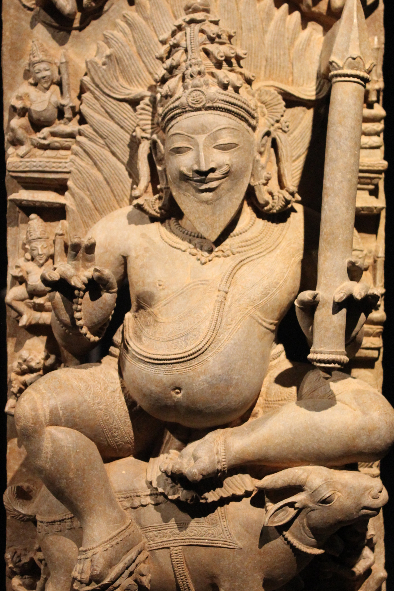Agni


Agni means fire, and connotes the Vedic fire god of Hinduism. Agni also refers to one of the guardian deities of direction, who is typically found in southeast corners of Hindu temples. In classical cosmology of Indian religions, Agni as fire has been one of the five inert impermanent constituents (Dhatus) along with space (Akasa), water (Ap), air (Vayu) and earth (Prithvi), the five combining to form the empirically perceived material existence (Prakriti).
In the Vedic literature, it is a major and oft invoked god along with Indra and Soma. Agni is considered as the mouth of the gods and goddesses, and the medium that conveys offerings to them in a homa (votive ritual). He is conceptualized in ancient Hindu texts to exist at three levels, on earth as fire, in atmosphere as lightning, and in the sky as sun. This triple presence connects him as the messenger between gods and human beings in the Vedic thought.
He remains an integral part of Hindu traditions, such as being the central witness of the rite-of-passage ritual in traditional Hindu weddings called Saptapadi or Agnipradakshinam (seven steps and mutual vows), as well being part of Diya (lamp) in festivals such as Diwali and Aarti in Puja.
Agni (Pali: Aggi) is a term that appears extensively in Buddhist texts, and in the literature related to the Senika heresy debate within the Buddhist traditions. In the ancient Jainism thought, Agni (fire) contains soul and fire-bodied beings, in its theory of rebirth and a class of reincarnated beings, and is discussed in its texts with the equivalent term Tejas.